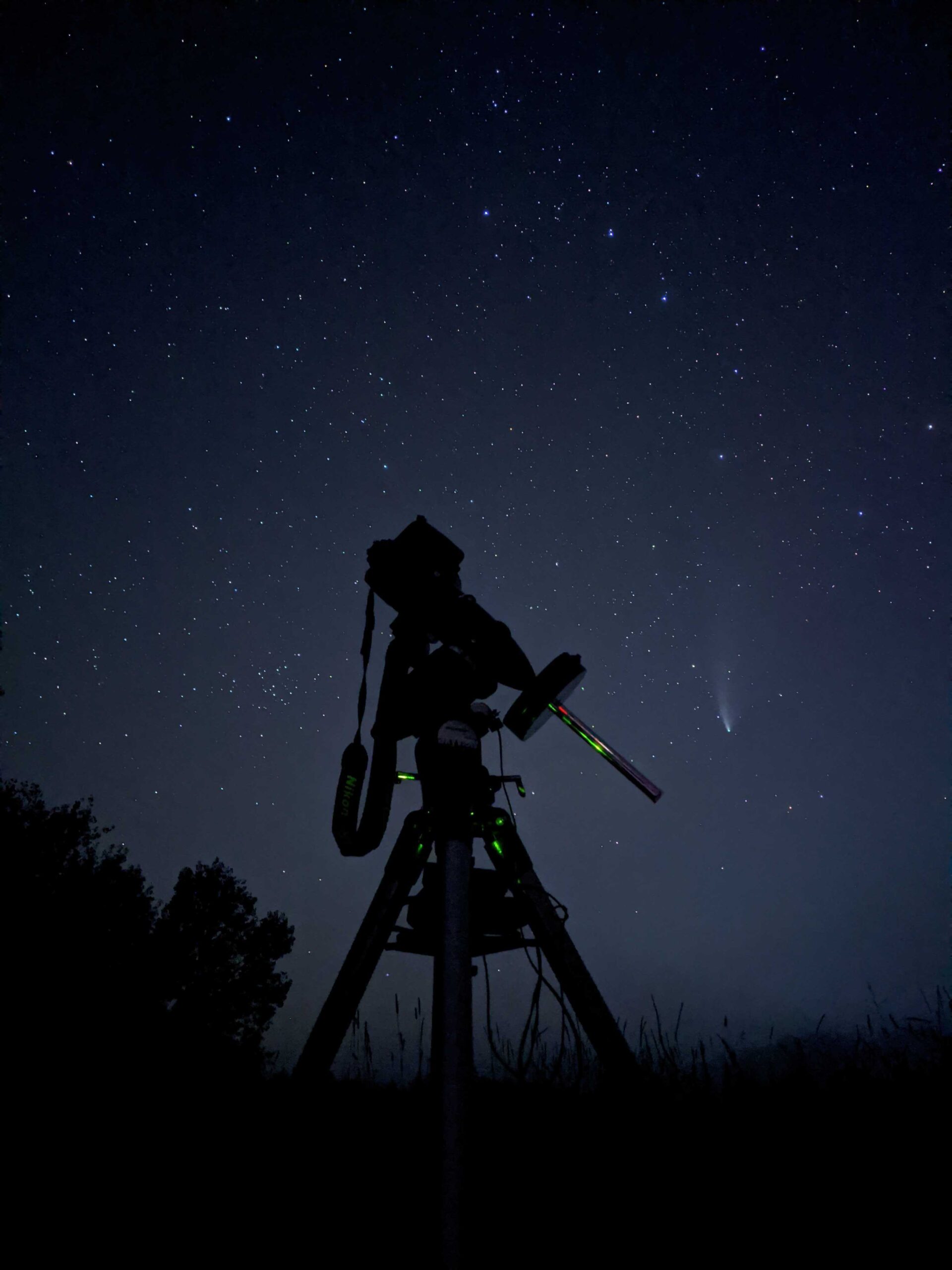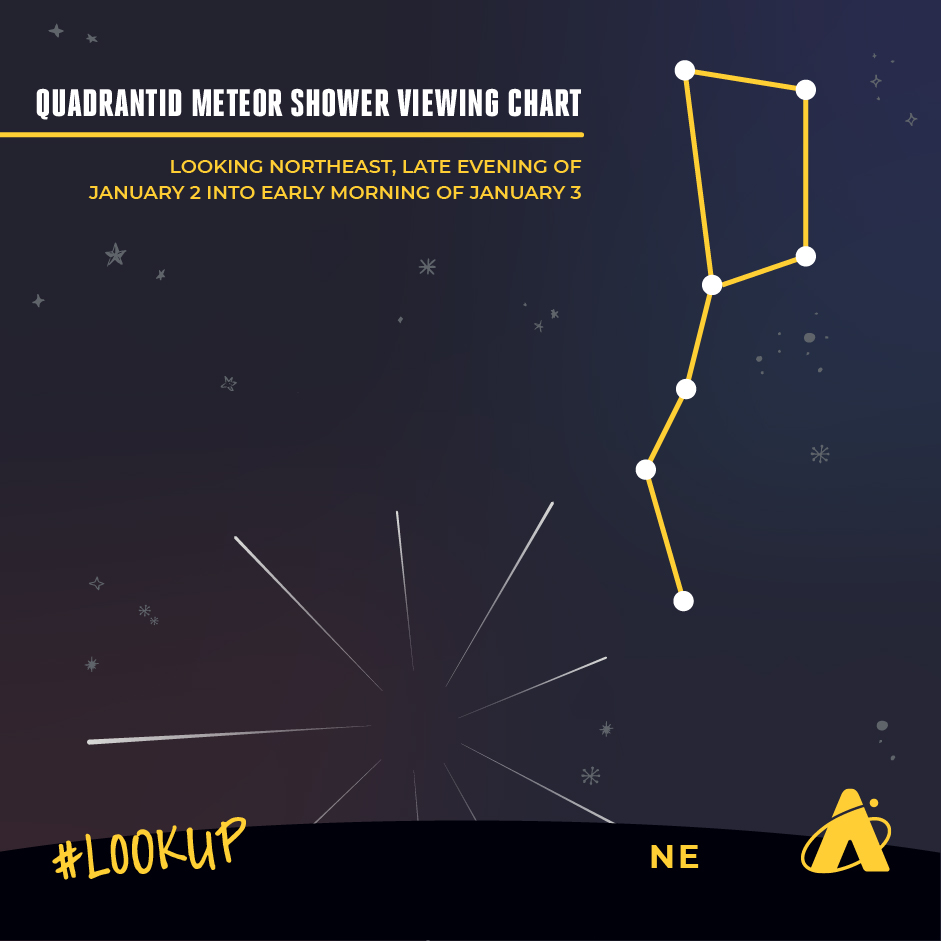Adler Skywatch: January 2021

Header Image: Night photography set up with Comet NEOWISE in the background, taken in July 2020. Image Credit: Nick Lake
It’s the beginning of 2021, stargazers! Earth is in the “just-right” zone for life to form—it orbits not too far from the Sun, and not too close. However, Earth’s distance from the Sun varies slightly every day. We reach our closest point to the Sun for the year this month, January 2021.
Perihelion is the point in Earth’s annual orbit when it’s closest to the Sun. It usually occurs every year in early January. In 2021, perihelion occurs on January 2nd, at 7:50 a.m. CST. At this time, Earth is just over 3 million miles closer to the Sun than it is at aphelion, which occurs in early July. If you’re wondering why the weather isn’t warmer at perihelion than it is at aphelion (at least in the northern hemisphere), it’s because the difference between the two distances is only about three percent.

The annual Quadrantid Meteor Shower also occurs early this month. This year it peaks the night of the 2nd and the early morning darkness of the 3rd. If you’re viewing under very dark, very clear skies, up to 40 meteors per hour are estimated at the shower’s peak. However, the waning gibbous Moon that night will blot out fainter meteors. So will viewing near city lights. No special equipment is needed to view meteors—just find a clear, dark, safe place, dress warmly, and look up.
For about the first two weeks of the month, the planets Jupiter and Saturn appear within a few degrees of each other, very low in the southwest sky only minutes after sunset. They’re not visible for long, as they set earlier each day. If you have a clear sight line to the southwest, try looking around the 10th, when you may see a third planet close by—the planet Mercury. The three planets form a small, nearly equilateral triangle in the early evening twilight of the 10th. Jupiter is the brightest of the three; then Mercury, then Saturn. After the 13th, Jupiter and Saturn appear so close to the Sun that they will be difficult if not impossible to see. However, Mercury moves a little higher above the west-southwest horizon nearly every day this month. It reaches its highest point in the sky the evenings of the 24th through the 26th—though it never gets much higher than 10 degrees above the horizon after sunset.
Also in the early evening, look to the south about 60 degrees high, or about two-thirds of the way up between the horizon and the zenith directly overhead, to see the planet Mars. It’s quite colorful and bright this month, though it gets dimmer with each passing night. The evening of the 20th it’s above the First Quarter Moon; and on the 21st it’s to the right of a waxing gibbous Moon. Mars sets in the west-southwest around midnight Central time this month.
The planet Venus is normally the brightest planet in the night sky, but this month it appears too close to the Sun to be readily visible.

Last Quarter Moon: January 6
New Moon: January 12
First Quarter Moon: January 20
Full Moon: January 28
Please note that these descriptions are for the Chicago area, using Central time.
Watch Skywatch Weekly This January
Tour the night sky weekly with the Adler Planetarium’s Theaters Manager Nick, who using cutting edge visualizations, NASA images, and astrophotography to show you what you can see weekly in the night sky!
Learn From Our Astronomy Educators
Watch exclusive live episodes of Sky Observers Hangout this January! First, our astronomy educators and the Curator of Herpetology from the Peggy Notebaert Nature Museum will discuss the issues our planet faces due to light pollution on January 11th. Then, we’ll learn all about star colors and what they tell us about the stars we see in our sky on January 25th. New episodes air every two weeks on Mondays.






